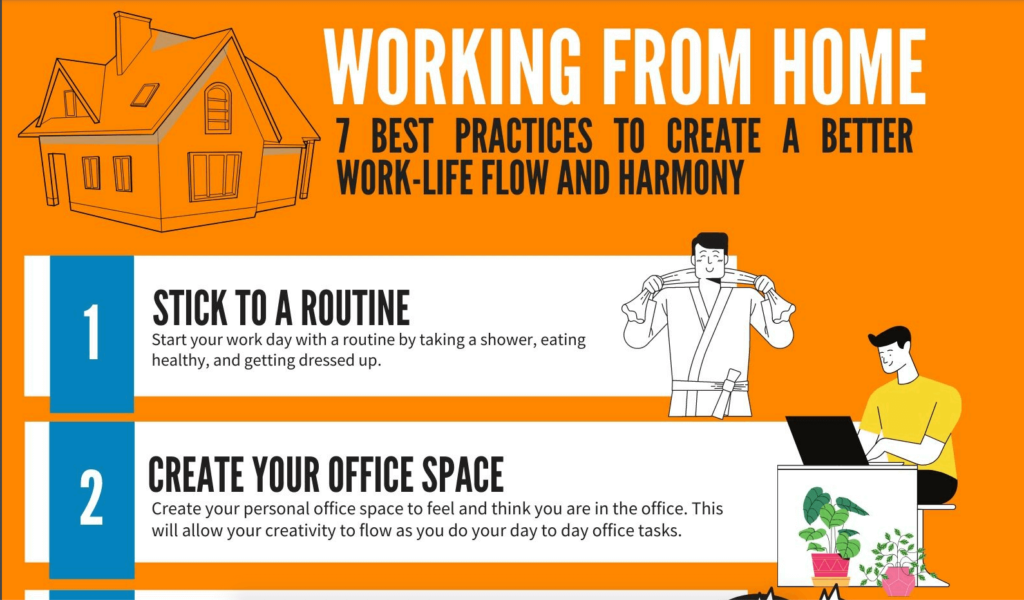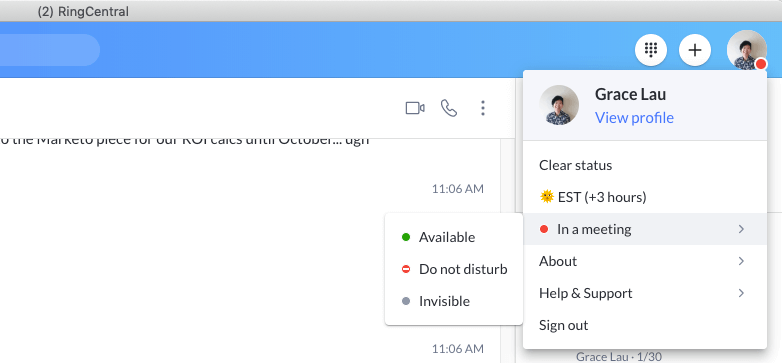With over 42% of workers working from home full-time, COVID-19 threw many of us in the deep. We found ourselves managing remote teams with no time to prepare—mentally or logistically.
The challenges have been plentiful, from managing logistics, ensuring our employees have the equipment they need to work ergonomically, overcoming technical hurdles, and monitoring employee mental health.
It’s no wonder McKinsey & Company dubbed COVID-19 “the ultimate leadership test.”
We’ve spent 2020 learning on the fly—getting the hang of the basics like learning how to video chat and how to balance productivity with flexible schedules.
But some of the most prominent remote management challenges centered around team communication and collaboration:
- How do we keep teams engaged and motivated in a remote work environment?
- How do we ensure everyone feels connected without the day-to-day office social interactions?
Studies show remote working won’t be going away when the COVID dust settles, with over 83% of office workers stating they want to continue working from home at least one day per week, post-pandemic.
Now, as we head into 2021, it’s time to build our remote management skills so we can move past survival mode and develop successful, collaborative, sustainable remote teams.
In this article, we’ve put together some of our best actionable tips, along with insights from a resident RingCentral expert, to help you develop a deeper understanding of remote management best practices and expand your toolkit:
- Start with your people
- Respect and trust your team
- Engage your team by encouraging collaboration and accountability
- Find some time for fun
- Build a recognition culture
Expert tip #1: It starts with the people
James Simpson, RingCentral’s Director of SMB Sales & Enablement, is an expert remote manager. James has been leading a large, high-performing remote team for the past two years.
In a recent internal employee survey, James received a 100% favorable engagement rating from his team (a result that’s so good it’s unheard of), so he’s well-positioned to speak to us about his experiences and learnings.
James says it always starts with the people when it comes to managing. He’s worked hard to create an environment employees trust. And while his team makes ample use of technology, he’s careful not to override the human element of authentic connection.
Much of his success as a remote manager stems from his people-first approach.
How to implement this into your workplace:
Leading with a people-first approach sounds great in theory, but how can you practice this in a busy remote work environment?
Notice when you’re getting buried in technology
While the tools we have at our fingertips (video conferencing, chat and instant messaging software, and phone) are essential for remote teams, always keep the human element top of mind.
It’s easy to find yourself using these tools as replacements for human interaction, especially during peak periods.
When you’re about to send an email or message to an employee, check in with yourself
Could this be a phone or video call? Could it be an opportunity to have a (virtual) face-to-face conversation and a quick check-in?
Use this communication touchpoint checklist for managers
This checklist outlines vital daily, weekly, and quarterly team communication tasks. It also includes bigger conversations about career development.
Get it here:
These conversations are often pushed aside when we’re busy, but they are vitally important to employee engagement. Use the checklist to prompt you to make regular contact by adding reminders to your calendar.
For an extra human-centric touch
James recommends taking the time to write a handwritten note: “I write handwritten notes and take a picture and send it over to them because it shows I took the time and cared enough to do that.”
Expert tip #2: Respect your team and show them you trust them
Studies clearly show Americans are working increased hours during the pandemic, and work-life balance can be problematic. In fact, many remote workers cite difficulty switching off from work mode at the end of the day as one of their biggest challenges.
When our office is steps away from our personal lives, it’s easy for managers and employees to fall into the “always kind of working” trap.
There are many reasons for this, including the simple fact we’re missing the contextual cues from our old lives that show us it’s time to wind down. We can’t see our coworkers get up, turn off their computers, and leave their desks, so we keep working away.
When managers are still checking emails and messages after dinner, it’s easy for employees to feel they should be doing the same.
James points out a common pitfall for managers, and something he struggled with when he first began managing remote teams.
“Technology makes it easy for people to be connected all the time, but that doesn’t mean they have to be connected all the time. That’s where we as leaders have to step up and say, ‘I respect you, and I respect your space,’” says James. “Just like I would in the office, I would give you the ability to be connected in the office and together in the office, but then at the end of the workday, you go home, and you go to the people who matter most to you.”
How to implement this into your workplace
Set clear boundaries
Have you clearly set out your expectations around out-of-hours work? Does your team have an afternoon cut-off time for making non-urgent work requests?
Create a plan
Consider workshopping some ideas with your team—you could create a wind-down action plan with suggestions for moving from work mode to home mode.
This might include changing from work clothes to everyday clothes, ensuring you shut your computer down, closing the door to the office, and changing gears from sitting at a desk to completing active tasks (e.g., cooking dinner).
Check-in with yourself—are you walking the talk?
Even if you’re saying all the right things about switching off and work-life balance, are you demonstrating these behaviors to your team?
If you’re visibly working long after the day is over, are you inadvertently sending cues to your team that they should be doing the same? If you have a communications system like RingCentral, turn your available status to Invisible to hide your online status:
Notice your own habits
Are you leading by example and showing your team what a solid work-life balance looks like? If your team wakes up to a stack of emails you’ve sent at 10:00 p.m., does this imply they should be working in the evenings too?
If you think this doesn’t have an impact, think again. Studies show that those who send emails after-hours underestimate the receiver’s need to respond, even for non-urgent emails.
Use the delay-send function
If you’re productive in the evenings and use that time for work (which many of us do!), consider using the delay-send function on your emails, so they arrive in your team’s inbox during business hours.
Also, consider logging out of your office messaging system.
“That’s been a hard lesson I’ve had to learn for myself,” says James. “Take the time to allow your team to disconnect at the end of the day, encouraging them to know they are allowed to step away when the workday is over.”
Expert tip #3: Engage your team by encouraging collaboration and accountability
Task management software can also help with accountability.
James prioritizes team cohesion by promoting collaboration, trust, and respect. His team meets regularly, and they work together to establish team goals. This frequent collaboration ensures they’re on the same page, they’re clear on expectations, and they feel accountable to each other.
James’ team worked collaboratively to develop a best practice guide for working from home. Everyone keeps a copy of the guide in a high-visibility place, and they refer to it often so that they’re always clear on their expectations as they work remotely:

How to implement this into your workplace
Develop expectations collaboratively
Instead of simply handing your team your list of expectations for remote work, consider engaging with them and developing expectations collaboratively.
Ensure your team has a voice
Consider running regular pulse surveys to ensure you’re engaging your team in the areas that matter most to them. A pulse survey gives your team a chance to (anonymously) speak on the issues that matter to them.
Do your employees want to know more about the company’s financial performance? Do they want more (virtual) face time with you? Are they clear on what’s expected from them? Use the results to guide you.
Always over-communicate
In a remote work environment, we lose many of the communication touchpoints we’re used to from the office (face-to-face meetings, informal discussions around the coffee maker).
It’s easy to think messages have been clearly communicated to staff when they’ve been lost in the digital noise. Always reinforce important messages via multiple channels, e.g., a team email, plus a virtual team meeting, plus a notification on your team chat system.
A unified communications solution like RingCentral can take the guesswork out of this for you. From team messaging to video meetings, your team can stay connected with the RingCentral app no matter where you’re working.
Expert tip #4: Find some time for fun
Many of us are feeling long-term chronic stress.
Researchers have discovered COVID-19 has a distinct effect on our brains. Our cortisol (stress hormone) levels are unusually high, while lockdowns and enforced remote work mean our dopamine (reward) and oxytocin (bonding) levels are low.
When the days are long, and there’s little to look forward to, our brains miss the dopamine hits they usually receive from those frequent moments of human interaction, and life can feel pretty unrewarding.
It’s essential to take some time for fun—whatever that means for you and your team. Far from a frivolous distraction, fun activities help your team bond and decompress while fighting the fatigue and monotony of everyday life.
“Happier teams produce better results, and better results tend to lead to happier customers, and happier customers buy more, so happy teams directly impact revenue,” says James.
How to implement this into your workplace
Plan some quick activities to break up the day
Virtual games, virtual escape rooms, quizzes, and surprise Starbucks deliveries for team coffee meetings are great options. Your budget and your imagination only limit the options.
You don’t need a big budget for significant results
Try having a GIF competition or a photography competition using images your team takes on their smartphones.
You could set a theme, like “most creative photo,” and encourage employees to stretch their imagination at home or while on a walk in their neighborhood.
Check out our guide to virtual team building activities for more great ideas.
Expert tip #5: Build a recognition culture
Recent research from McKinsey & Company found employee experience and engagement can be improved by up to 55% by addressing their need for recognition through non-financial means.
People crave acknowledgment for their efforts, and a “thank you” or “well done” is often far more powerful than money, gift cards, or other tangible rewards.
Studies also show regular, timely recognition drastically improves work quality and reduces absenteeism. Establishing a culture of recognition is one of the easiest, cheapest, and most effective ways to keep your employees engaged.
Recognition is often lacking in remote work situations as many of the in-office recognition rituals (a verbal “well done,” a mention in a team meeting) have disappeared.
Employees can feel isolated, like they’re quietly working away under harsh conditions with no thanks or acknowledgment, so it’s important to let them know you see them and you understand what a great job they’re doing.
How to implement this into your workplace
Make recognition part of your company culture
It’s crucial to ensure you build recognition into your workplace culture and make it a part of the company’s DNA. This reduces the likelihood of forgetting it during peak periods.
Add recognition touchpoints everywhere
Add employee recognition to your team meeting agenda, so it becomes an expected and regular feature. Make it part of the standard agenda for one-on-one performance meetings, too.
Create a recognition channel in your team chat or messaging software. Acknowledge high performers on company social media posts. The more, the better!
Make it personal
Consider writing a handwritten note thanking or recognizing an employee. You could send the note via snail mail or snap a photo and send it digitally.
Encourage peer-to-peer recognition
Recognition doesn’t always need to travel from managers to employees. Peer-to-peer recognition is enormously influential and a great way to build your company culture.
Consider having a “shout outs” channel on your instant messaging system. This serves as a dedicated channel where employees can publicly thank each other for going above and beyond or just for being a great colleague.
“Praise publicly, but also take the time to praise in private, so they know it’s heartfelt,” says James.
Remote management: Ready to help your team adjust and adapt?
Developing a unified, collaborative, high-performing remote team takes time and practice, but RingCentral’s unified communications solution can make your job much easier.
Check out a demo to see RingCentral in action or contact our team to find out more.
You can catch James Simpson on the New Normal video series, talking about his experience leading and engaging remote teams.
Originally published Dec 02, 2020, updated Jan 30, 2023







